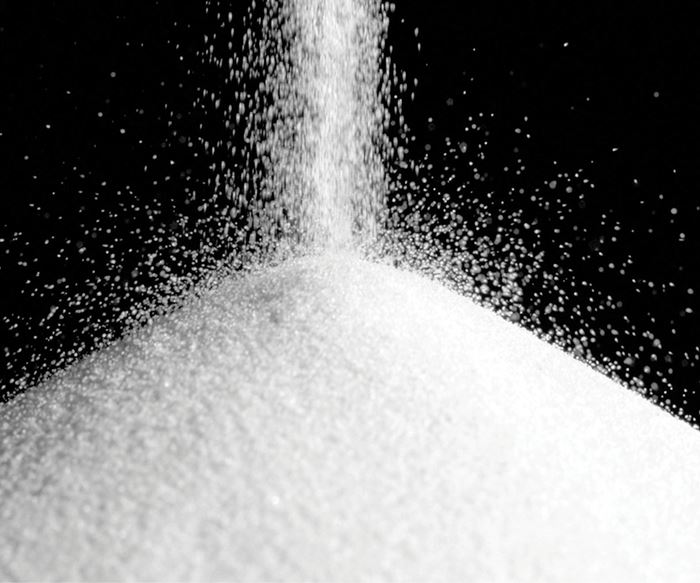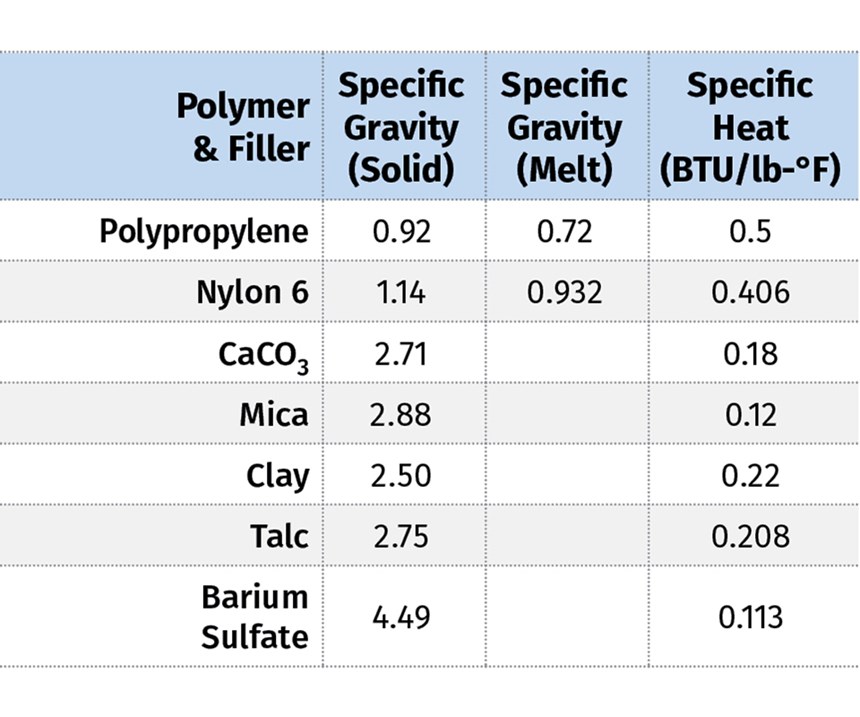Extruding with Fillers
You can use the reference point from processing unfilled polymer to determine whether you can run filled resin on your current system.
Fillers are added to polymers to accomplish many different property changes and improvements. They can alter physical properties, reduce costs, trim weight, change the electrical conductivity, and enhance thermal properties, just to name a few. In almost every case they also have an effect on processing behavior during extrusion.
Questions are often asked whether filled polymers can be processed on a specific extrusion system. This question can be answered for inert fillers, which do not chemically change or go into solution after mixing. But finding the answer requires a reference point with the unfilled polymer.
Most inert fillers have a higher specific gravity than polymers, which increases the compounded specific gravity (S.G.). Since the extruder screw is a volumetric device, a compound with higher S.G. will typically increase the specific output (lb/hr-rpm) proportional to the density. This might be expected to result in drive overload at higher filler loadings.
To evaluate this possibility, some simple calculations will provide guidance. The accompanying table gives some of the required data for such a calculation. Notice that the fillers all have a higher specific gravity and lower specific heat (the amount of energy required to raise the temperature of a particular substance by a specified amount) than the polymers. For example, the compounded specific gravity of 40% calcium carbonate (CaCO3) filled PP can be computed by the “formula for mixtures” as follows:
1/[(% Polymer/S.G. Polymer) + (% filler/S.G. Filler)] = S.G. Mixture
EXAMPLE ONE
Average S.G. of mixture:
1/[(0.60/0.72) + (0.40/2.71)] = 1.019
S.G.
(Note: the polymer melt density is used in this calculation.)
In this case, the extruder specific output in pounds will increase by more than 40% (1.019/0.72 = 1.415) with the 40% filled polymer because CaCO3 has three times the S.G. of PP and the screw has a relatively fixed volumetric output per rpm.
We can also use the same formula for mixtures to obtain a very good estimate of the average specific heat of a mixture that is not alloyed.
EXAMPLE TWO
Average specific heat of mixture: 1/[(0.60/0.5) + (0.40/0.1994)] = 0.312 (BTU/lb-°F).
Since about 90% of the drive power requirement on a single screw goes to raising the temperature of the polymer from solid to melt, we can ratio the drive load requirements for similar filled and unfilled polymers. The ratio of the power requirement for the neat PP and the mixture can be approximated at the same melt temperature by multiplying the S.G. by the specific heat for each, since the volume of output is approximately the same:
Neat PP: 0.72 × 0.5 = 0.36 Mixture: 1.019 × 0.312 = 0.318 Ratio: 0.318/0.36 = 0.883 (Ratio of drive load)
This indicates a decrease in power requirement for the filled PP of 11% versus the neat PP. This indicates a decrease in power requirement for the filled PP of 11% versus the neat PP. This means the filled PP would have a lower motor load with 40% CaCO3 and require no changes in either the specific output of the screw or in the torque capacity. But if you processed nylon 6 with 40% CaCO3, the drive load would be almost exactly the same as with neat nylon 6, so it's a combination of all the variables that determines the load.
Because this is a simplified calculation, several variables can affect its accuracy, the primary one being the change in viscosity with theaddition of 40% CaCO3.
Inert fillers almost always increase the viscosity, which increases the pressure drop through the tooling and can decrease output. However, the increased head pressure also increases the melt temperature, so the overall effect on power requirement often follows the calculation closely. Keep in mind that PP with 40% CaCO3 by weight is only about 15% filler by volume, so the mixture is still 85% PP by volume. Also, inert fillers do not normally change the shear sensitivity in the processing shear-rate range, so the die flow with the filled polymer would not be expected to change significantly.
When considering processing of filled polymers, a quick estimate can save a lot of difficulty and predict possible equipment changes.
ABOUT THE AUTHOR: Jim Frankland is a mechanical engineer who has been involved in all types of extrusion processing for more than 40 years. He is now president of Frankland Plastics Consulting, LLC. Contact jim.frankland@comcast.net or (724)651-9196.
Related Content
The Effects of Stress on Polymers
Previously we have discussed the effects of temperature and time on the long-term behavior of polymers. Now let's take a look at stress.
Read MoreUnderstanding Melting in Single-Screw Extruders
You can better visualize the melting process by “flipping” the observation point so the barrel appears to be turning clockwise around a stationary screw.
Read MoreHow to Select the Right Cooling Stack for Sheet
First, remember there is no universal cooling-roll stack. And be sure to take into account the specific heat of the polymer you are processing.
Read MoreWhere and How to Vent Injection Molds: Part 3
Questioning several “rules of thumb” about venting injection molds.
Read MoreRead Next
For PLASTICS' CEO Seaholm, NPE to Shine Light on Sustainability Successes
With advocacy, communication and sustainability as three main pillars, Seaholm leads a trade association to NPE that ‘is more active today than we have ever been.’
Read More
.jpg;width=70;height=70;mode=crop)









